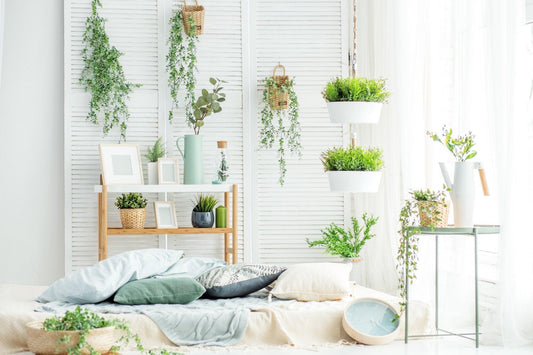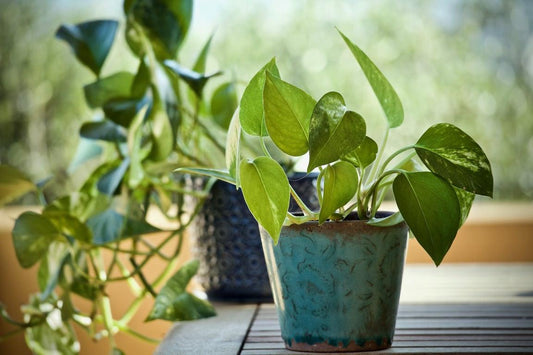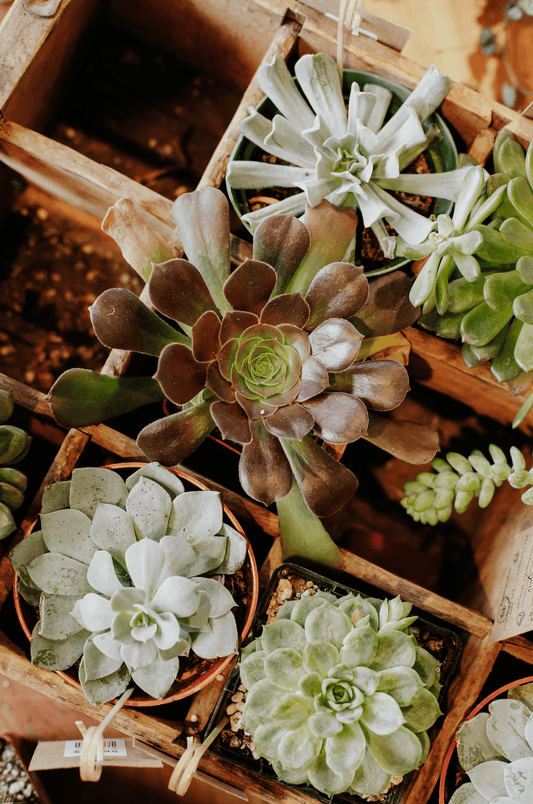Commonly Asked Plant Questions
We all know that one of the latest design trends is having houseplants in our space. It's simply not just for home improvement and aesthetics, but people feel like they are bringing a piece of nature into their homes.
If you want to start an indoor jungle or home garden, Terracotta is here to answer the most commonly asked indoor plant questions!
FAQ # 1: I'm a newbie to indoor gardening! What are the best houseplants to get started?
There's no doubt that there are easy-breezy plants to difficult houseplants. Each plant family has specific instructions for care so they can thrive at their best. Its care dependency should be your primary consideration when deciding which plants to get first.
Most people would turn into succulents and cacti as the fundamentals, but let's spruce up your list with the following houseplants as your go-to basics:
- Zamioculcas Zamiifolia (ZZ Plant)
- Yucca
- Pilea peperomioides (Chinese money plant)
- Tradescantia (Spiderwort)
- Monstera deliciosa
- Epipremnum aureum (Golden Pothos)
- Fittonia (Nerve Plant)
FAQ # 2. I'm a busy person! Will I still have time to keep my plants alive?
Definitely! If you're one of the people who have kept but killed a bunch of houseplants, our simple advice is to be strategic about your plants.
The reality is there are so many different types of plants, and while they may be affordable upon checkout, always remember that they are living organisms that will require some of your attention and time! Keep in mind that you have ample options when looking for a plant, some of which may not require much maintenance, like the Mint, Ivy, Cacti, Spider Plant, and Aloe.
FAQ # 3. When should I water my plants?
Rule of thumb: Watering ALWAYS depends on the plant you are taking care of! All houseplants require a certain percentage to let their soil dry first before watering again. Though, some exceptions to this rule include cacti and succulents.
As a new plant parent, it is essential to remember that most plants actually die not because of the lack of water but because of overwatering and root rot! Our advice: do not schedule your waterings in days, but instead determine its needs by checking its soil moisture.
While most people only look at the surface, this isn't a suitable method since plants will always look like it needs to be watered! We recommend tap on the side of the pot; if it sounds hollow, your houseplant is probably dry! You can also use a chopstick to stick into the soil; if it comes out clean, it probably needs that next batch of water. There are advanced tools that measure out water moisture, which you can buy at specialty shops.
Last but not least, remember to always water your houseplants with lukewarm water instead of cold, even better if filtered.
FAQ # 4 Are there rules on where to put my plants?
Research is the best tool to keep your plants alive! Simply being curious will go a long way. Generally speaking, windowsills with a thin shade tend to be the best places for most plants. Other options will depend on whether the plant thrives best in full sun or low light.
FAQ # 5 Why are my plant's leaves drooping or yellowing?
There may be different cases of why leaves are yellowing or drooping. Take a moment to look at your plant. If you see some leaves yellowing but there are new ones still developing, the plant is just going through its natural aging process. On the other hand, when you don't see any signs of new growth and the leaves are getting brown and sad, you may be overwatering. Check its soil to monitor if this is correct. If it is damp or soggy, just let it dry.
If overwatering is not the problem, you may need to move your houseplant to a different spot. Maybe you just placed it in a dark or too sunny location for it. If you notice that it is elongated and doesn't have any blooms, then your plant needs more light. On the other hand, if you see that its leaves have a washed-out appearance and are scorched or brown, your plant may need a darker location.
FAQ # 6. Why are the leaves turning brown?
When you see that your houseplant leaves are turning brown, especially around the edges, this is usually related to not getting enough water. However, simply watering it more may not be the solution. The reality is that this may be happening for many different reasons.
The plant may be root-bound and, therefore, the roots don't take up enough water. In this case, you need to repot the houseplant. Another reason might be that you are using the wrong soil for your plant and it may not be able to hold water as it should.
The roots may also be suffering from tip burn. It may be the result of the soil having too many salts. If this is the case, you need to flush the pot with water from top to bottom.
FAQ # 7. Why is water dripping from my houseplant leaves?
While this can be a sign of pest infestation, the most probable cause for this to be happening is just the natural plant process. To ensure they can catch water and nutrients, its roots need to create a vacuum. So, they allow moisture to evaporate out through the leaves. When the air at your home is humid, there will be less moisture evaporation, and it will simply transform into drops of condensation. And this is exactly what you are seeing.
FAQ # 8. How can I take care of my plants in the winter?
The most important aspect to keep in mind is that not all plants are the same. While some plants simply go dormant during the winter, others keep growing, and you will need to ensure that they get enough light.
In terms of watering, there should also be some changes. During winter, your houseplants won't probably need as much water as they need during the summer.
FAQ # 9. How can I prevent or deal with flies and fungus gnats?
Truth needs to be said: you won't be able to prevent flies and fungus gnats completely. Nevertheless, there are things that you can do to deal with them in the best way. One of the things you can do is to simply use a fork to rake the top level of the soil once or twice a week. In case you notice that you have an infestation, spray your plant with some Neem Oil.
FAQ # 10. What type of soil should I use for repotting?
Most houseplants grow perfectly fine in regular potting soil. However, and depending on your plant, you may need to add some organic matter such as compost. On other occasions, you may want to add some grit such as perlite or sand for extra drainage.
One of the key points to have in mind is that you should avoid those "garden soil" products as well as soil that you dug straight out of the ground.
For more helpful tips on plant care, follow us on Instagram @topterracotta. You can also subscribe to our mailing list for news, updates, helpful content, and exclusive deals.




